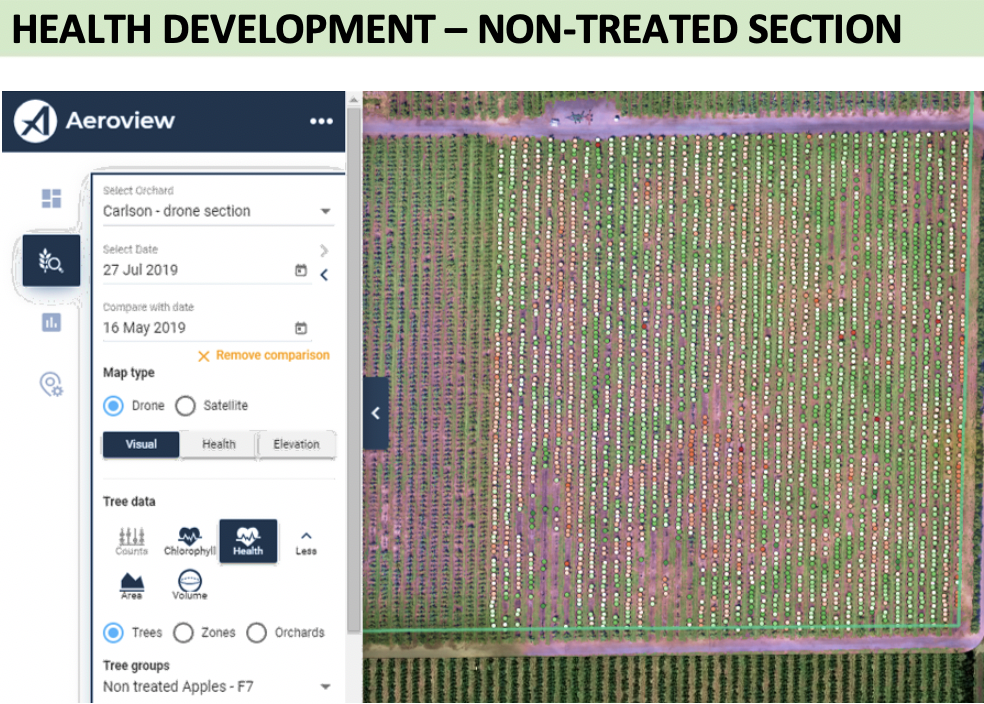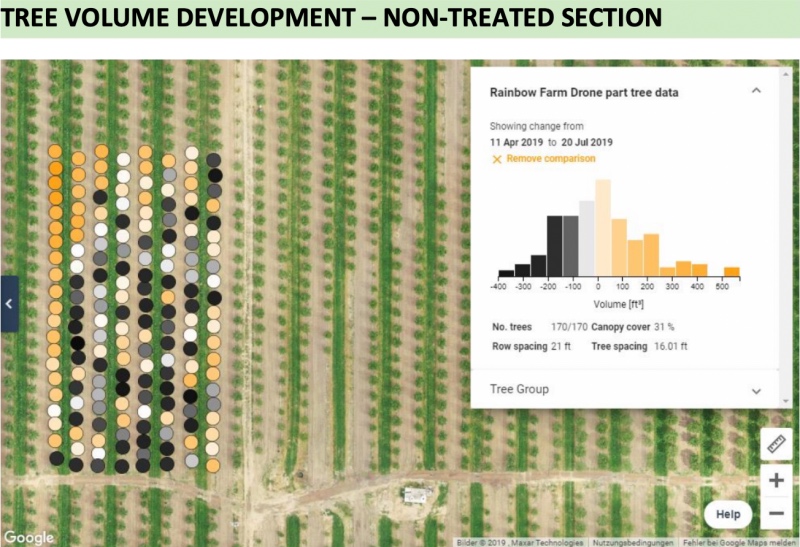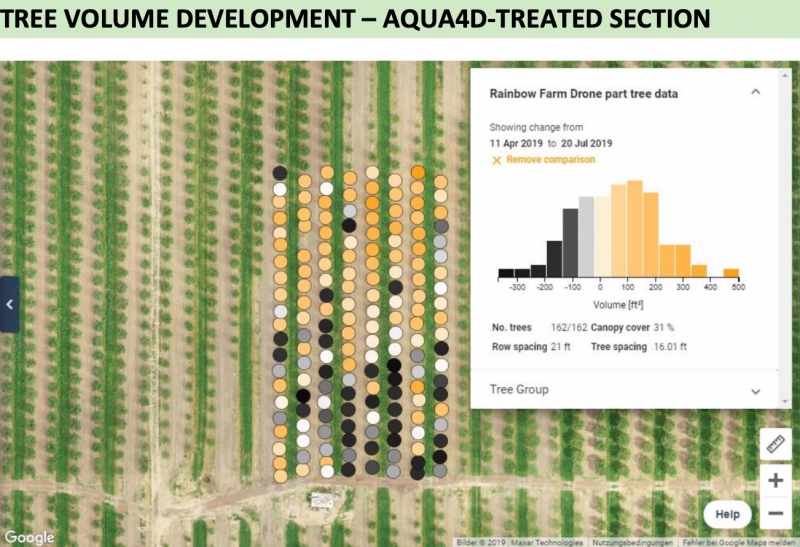Drone Monitoring Provides Irrigation Insights to Almond Producers
We’re still in the early years of the 4.0 revolution, but precision measurements and big data are already transforming many industries – none more so than agriculture. Increasingly, this means enlisting the help of drone pilots and real-time measurements to offer insights growers could only have been dreamed of just a decade ago.
One such pilot is Mark Hull from All Drone Solutions, flying drones in California and Washington for Aerobotics. This technology offers advanced high-resolution imaging for simultaneously surveying large numbers of trees. Exact data for every single tree of the surveyed area can be measured, including health (NDVI and NDRE), chlorophyll, canopy cover, height, and volume. Armed with this data, growers can now optimize all their inputs, leading to increased efficiency and precision irrigation.
“We use near-infrared cameras to monitor the stress of the plant, and our drones have five different cameras to take into account how the near-infrared light reflects, because that’s the determining factor for how healthy the trees are,” explains Mark.
Using this data, it’s been possible to build an unprecedentedly accurate insight into the effect that precision irrigation with Aqua4D has had this year on various crops across the West Coast.
Here we take a look at some of the results it yielded.
Almond orchards
Almond orchards lend themselves well to aerial drone monitoring, enabling ultra-efficient tracking of overall progress over large areas. This is especially important on a crop like this which is first harvested in the third year – growers no longer need to wait years to get objective measurements of the effect of their irrigation practices. What’s more, we can build an accurate picture of the yields they can expect come harvest time.
Aqua4D currently has installations on 15 orchards in the Central Valley, including seven almond orchards and a range of other tree crops of all ages.

Example of two monitored areas – one treated by Aqua4D (lower part), and one control plot irrigated as normal (the area above the road).
In general, almond growers have found that Aqua4D contributes to superior health in the first year, leading to superior growth in the second year, then having a direct impact on yields when the trees reach maturity in the third year. For older trees, the positive impact of Aqua4D irrigation has been seen almost immediately.
Impressed with the progress of their trees, these growers jumped at the chance to see from above just what effect this innovative irrigation was having on their crops. Here are some of the findings.
Health development
Plant health is measured by Aerobotics using NDVI (Normalized Difference Vegetation Index) and NDRE (Normalized Difference Red Edge). Healthy plants with greater amounts of chlorophyll reflect more near-infrared and green light compared to other wavelengths.
This is represented below, with greater preponderance of green signifying greater plant health, and red for health problems and increased stress:
Slider: adjust to move between Aqua4D area (move to left) and untreated area (move to right)


“It’s clear when looking at the non-treated section that more trees have lost more health compared with the Aqua4D plot, and this is in just three months,” says Aqua4D’s Walter Thut. This is due to how the Aqua4D trees can deal better with stress and hot weather over this critical time period, with precious moisture remaining longer in the soils.
“Midday to 6pm is the hottest time in the Central Valley summer,” Thut explains. “The untreated trees decrease their water uptake during this period, while the Aqua4D-treated trees are still increasing their uptake until mid-afternoon, and don’t yet need to deplete their reserves.”
Keeping soils moist for longer is one of the hallmarks of Aqua4D technology, and here we see it in action.
The drone findings also correlate with recent real-time measurements in the Netherlands, which showed that plants irrigated with Aqua4D can better cope with variations and stress, recover their reserves more quickly, and grow in a more vegetative way.
Tree volume
Some trees monitored by the drone are not yet of harvesting age, so tree volume can give the best indication of the expected almond yields in the third year. In the two measured orchards, the drone data showed superior tree volume after only 4 months.
Even despite disadvantageous water quality with a high salt concentration, the Aqua4D treated almond trees show 6% more volume (later further verified with trunk measurement by H2O-Optimizer).
The images below of trees just 6 months after planting clearly show increased volume, a strong indicator of higher yields during the first harvest:
Slider: adjust to move between Aqua4D area (move left) and untreated area (move right)




In all these recent cases, the data gathered from the Aerobotics drone flights served to confirm the expectations of the growers regarding the impact of Aqua4D technology. “They now have precise measurements of tree development merely months after planting. The trees are clearly more resilient and the combination of health, volume and canopy cover give a clear indication of what yields can be expected.” says Walter Thut.
This echoes findings (available here) in other crops around the world, including avocados, tomatoes and bananas, where plants and trees have shown greater leaf coverage, improved stress resilience, and ultimately higher yields and less losses.
Aqua4D is continuing its expansion in the Central Valley, where the company is boosting crop efficiency, optimizing irrigation, saving resources – and increasing profits for growers.
California
Almonds
Ag 4.0


Mark Hull and Walter Thut watching drone take off in Californian almond orchard

Aqua4D installation in Central Valley


